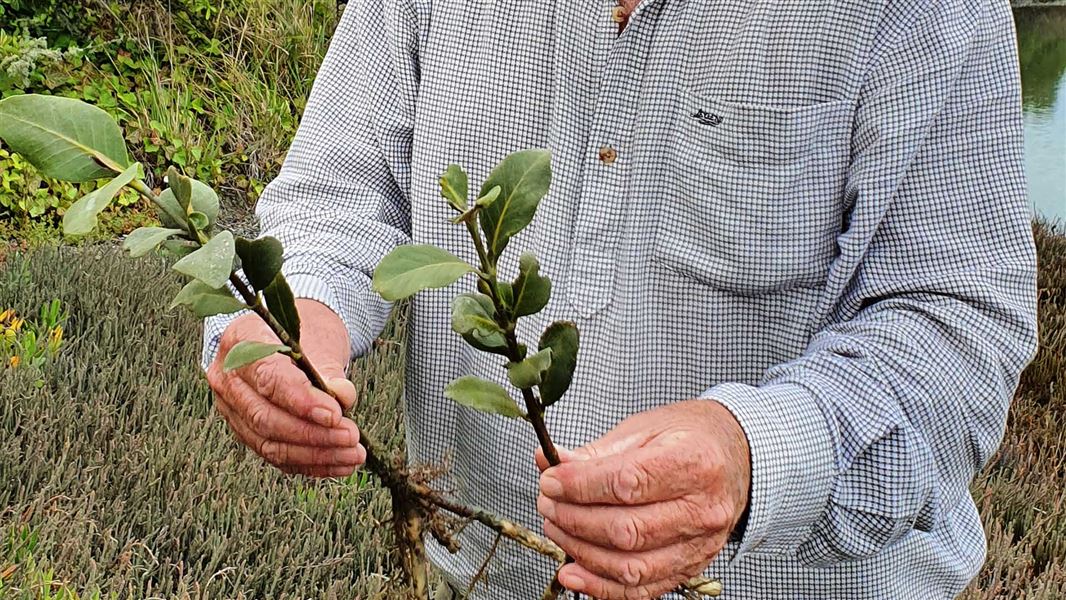Archived content: This media release was accurate on the date of publication.
Date: 24 February 2020
Ahuriri Estuary is an incredibly important ecosystem in the region. It provides habitat for endangered species like the kuaka (eastern bar-tailed godwit), spoonbills, dotterels and occasionally terns and herons.
Mangroves are a native species that have an important role to play in many wetland environments, but they do not naturally occur in the Hawke’s Bay region. The introduction of mangroves could devastate this habitat, reducing space for foraging and roosting for these species and altering the ecosystem naturally occurring there.
The mangrove seedlings were discovered planted, still wrapped in newspaper, on separate occasions by locals Mike Hockey and Hans Rook, who removed them and immediately contacted DOC.
“We’re alarmed by increased reports of mangroves being found in this estuary by vigilant members of the community,” says DOC Biodiversity Senior Ranger, Denise Fastier. “The introduction of these plants to Ahuriri Estuary, where they don’t occur naturally, could be catastrophic for the delicate estuarine ecosystem that supports so many threatened species of wading birds.”
Mangroves are a natural part of the ecosystem in northern New Zealand and have an important role to play in maintaining environmental balance in these places. The plants and sediment underneath mangroves are also large carbon sinks so are important for the challenge of climate change. However, in Ahuriri, they have never been a part of the environment and if they were to establish, Fastier says, they could upset the balance.
Anna Madarasz-Smith, Hawke’s Bay Regional Council’s, Team Leader Principal Scientist Marine and Coasts says, “Mangroves are only naturally found in areas north of East Cape. They have many great qualities including binding sediments to reduce erosion, habitat for fish and invertebrates and filtering water to improve water quality.
“But as Hawke’s Bay is not within the natural range of mangroves, we advise strongly against trying to introduce them to estuaries in this area.”
Anyone found planting mangrove seedlings in Ahuriri Estuary could find themselves facing prosecution under the Conservation Act 1987. If you see mangroves in the estuary contact DOC HOT (0800 362 468)
Background information
- Scientific name for mangroves: Avicennia marina subsp. australasica.
- Mangroves respond to higher nitrogen levels by growing faster and producing more viable seed.
- Ahuriri Estuary is part reserve, part wildlife refuge, with different aspects managed by DOC, HBRC and NCC.
- Seedling planters could face prosecution under the Conservation Act, 1987, Section 51S(1) (g) and (h).
Contact
For media enquiries contact:
Email: media@doc.govt.nz
